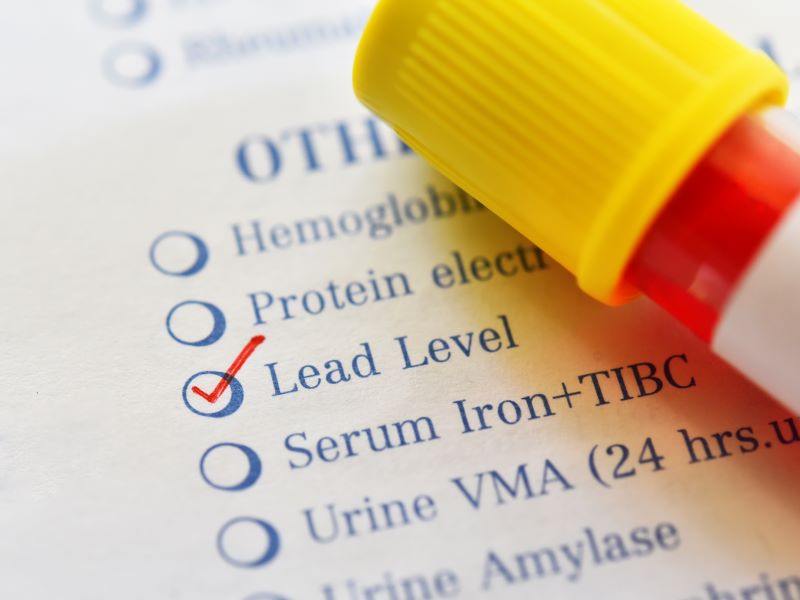Recommended
The harms and burdens of lead in the global context
Lead poisoning may be among the most pressing public health challenges faced by low and middle-income countries (LMICs) and is certainly one of the least recognized and most neglected. Lead exposure is estimated by the Institute of Health and Metrics to be responsible for 900,000 deaths per year (more than malaria), primarily as a risk factor for heart disease,[1] and both chronic and acute exposure can have debilitating effects on almost every body system. On a population level, much of its harm comes through its effects in impeding child neurological development: even low-level, subclinical lead exposure during pregnancy and early childhood has been shown to cause substantial and lifelong deficits in cognitive ability, as well as issues with attention and behavior control.
In high-income countries (HICs), the phaseout of leaded gasoline since the 1970s has led to dramatic decreases in levels of lead exposure. While levels have also fallen in many LMICs, they remain extremely high. There is a severe scarcity of data, but what does exist suggests that up to a half of children in LMICs have levels of lead exposure at which the WHO recommends public health intervention, and even levels below the WHO benchmark have been shown to carry significant risks. The effects of lead poisoning on cognition and behavior, combined with its high prevalence, suggest that lead exposure is likely to have a substantial impact on overall educational attainment, crime, violence, and potentially economic growth in LMICs.
Sources of lead exposure and potential solutions
Since the phaseout of leaded gasoline, no single source of exposure has dominated globally, and the key sources responsible for lead poisoning vary widely between and within countries. While our understanding of the primary contributors has improved, there is still limited research on the relative importance of sources at the global and local levels. Nevertheless, the following sources have been identified as a cause or potential cause of significant levels of lead poisoning in many LMICs: lead-acid battery recycling, mining and ore smelting, contaminated spices, lead paint, cookware, cosmetics, and toys and consumer goods. Other potentially important sources include lead pipes, residual pollution from leaded gasoline, light aviation fuel, e-waste recycling, traditional medicines and ceremonial powders, and folkloric traditions involving lead.
Important steps governments and agencies within LMICs can take against lead poisoning include developing capacity for the measurement and monitoring of levels of lead exposure; assessments of exposed populations to identify key sources; strengthening health systems to diagnose and treat lead poisoning; improving nutrition to limit lead absorption; and informing key stakeholders and the public generally about the threat of lead exposure, and how to recognize and prevent it. Other key actions are source-specific and may depend upon the sources identified to be the most central within a country. These are detailed in parts 2 and 4, but include roles for increased regulation, improved enforcement capacity, land remediation, and engagement with industry stakeholders and manufacturers of affected consumer products. Interventions against some sources are at an early stage of development, and there is a shortage of research on their effectiveness.
Current initiatives and actions by the G7 and international organizations against lead poisoning
While most action against lead poisoning within LMICs must be taken by LMIC governments themselves, G7 countries and international organizations also have an important role to play in efforts to end lead poisoning globally. Overall, our stocktaking of current actions and initiatives detailed in part 3, while not exhaustive given the rapid timeframe in which it was conducted, shows that current actions are fragmented, ad hoc, and relatively small in scale compared to the importance of lead poisoning as a global health, education, environment, and development issue.
In 1996 and 1997, OECD and G8 declarations (respectively) included commitments to reduce lead poisoning; however, the content of these declarations is no longer in line with up-to-date recommendations based on current scientific consensus. The Convention on Long-Range Transboundary Air Pollution contains a protocol limiting emissions of heavy metals, including lead. The Rotterdam convention requires that importing countries give prior informed consent to imports of certain lead compounds historically used as gasoline additives. The Basel convention also requires prior informed consent from countries importing certain types of waste containing lead.
A few G7 countries fund and/or implement programs aimed at building capacity for chemical and waste management in various low and middle-income countries, although few of these are directed specifically at lead poisoning. Besides this, many countries provide financial and technical support to the international organizations discussed below in their efforts against lead poisoning.
Several departments within the United Nations Environment Program (UNEP) publish guidelines supporting policymakers to address lead poisoning. They have also initiated a few programs supporting countries directly in introducing regulation, and more recently the United Nations Environment Assembly agreed on the foundation of a science policy panel on pollution prevention. The World Health Organization (WHO) also provides technical advice for clinicians as well as policymakers to address lead poisoning. Together, UNEP, WHO, and the United States Environmental Protection Agency lead the Global Alliance to Eliminate Lead Paint, which promotes lead paint regulation globally. The World Bank has begun to incorporate action against lead poisoning within its lending operations and its analytical work, and is seeking funding for a multi-donor trust fund to improve chemical and waste management. UNICEF has also taken actions against lead poisoning through survey work in Georgia, and a global awareness-raising campaign. There is a relatively high appetite among international institutions to sustain and expand these initiatives.
Recommendations for the G7 and its member countries
The report identifies a number of highly impactful actions that can be taken by G7 partners now to reduce the burden of lead poisoning. The recommendations are briefly summarized here, and detailed in full in section 6; while informed by our engagement with various stakeholders, they remain solely our own.
Reaffirm and elevate a collective G7 political commitment to a shared vision for a world free of lead poisoning. A strong, clear, and high-level statement is needed, referencing up-to-date international standards and evidence, and endorsed by the political leadership of G7 members, to elevate lead poisoning as a priority issue with independent standing as a pressing global challenge.
Support strengthened international cooperation–among G7 members and the broader global community–to progressively reduce the burden of lead poisoning worldwide. Specific actions for consideration include:
- Exploring the potential for expanded and more structured standards, potentially under the auspices of a voluntary or binding international agreement;
- Regular coordination and strategic alignment between G7 members and potentially the broader international community to address sources of lead poisoning;
- International standard-setting, monitoring, and reporting of lead poisoning via relevant technical agencies;
- Developing a Global Environment Facility proposal to address sources of lead poisoning;
- Expanding investments in reducing lead poisoning via other multilateral mechanisms and international organizations; and
- Expanding involvement by G7 members in international cooperation to reduce lead poisoning.
Expand use of Overseas Development Assistance (ODA) to invest in global and LMIC country-level capacity to monitor, prevent, and treat lead poisoning. G7 members, via their respective aid agencies, should elevate lead poisoning as a priority issue, and consider initiating or expanding the following activities:
- Supporting LMICs to conduct initial diagnostic exercises on the prevalence of lead poisoning and key sources of contamination;
- Strengthening in-country capacity for the routine monitoring of lead exposure;
- Increasing awareness among field-based staff on the problem of lead poisoning;
- Supporting civil society organizations advocating for action against lead poisoning;
- Assisting LMICs to establish and enforce limits on lead in consumer products;
- Through G7 development finance institutions (DFIs), support private sector efforts to increase lead safety;
- Funding research by local partners on the burden of lead poisoning, exposure sources, and interventions against it;
- Considering investments in R&D designed to address lead poisoning in low-resource settings.
Strengthen G7 leadership at home to protect G7 citizens from lead while contributing to a world free of lead poisoning. G7 members should consider the following actions to support the broader vision for a lead-free world:
- Ensure domestic regulatory standards on products and the environment are aligned with the most stringent, evidence-based levels recommended by the WHO and other technical bodies;
- Develop inter-agency working groups on lead within G7 governments to coordinate efforts across relevant governmental bodies;
- Ensure compliance with the Basel convention and other existing international agreements on the cross-border movement of hazardous waste containing lead;
- Integrate lead poisoning awareness and prevention into health and safety protocols for government staff travelling to areas with high levels of lead poisoning;
- Consider expanded domestic surveillance systems, including source analysis, full data publication, and follow-up actions to remove lead-contaminated products from supply chains;
- Conduct preliminary review of exports and imports of lead, products containing lead, and lead waste to inform potential measures to address lead poisoning through trade levers;
- Consider responsible sourcing regulations for G7-based importers of lead; and
- Consider regulations on the export of products containing lead, for example requiring that exporters guarantee a functioning end-use system.
エグゼクティブサマリ
世界における鉛の有毒性および負荷
鉛中毒は、低~中所得国(LMICs)が直面している最も差し迫った公衆衛生課題の1つで、明らかに最も認知度が低く、軽視されている公衆衛生課題の1つです。保健指標評価研究所(Institute of Health and Metrics)は、主に心臓疾患のリスク因子として、鉛被ばくで毎年900,000人(マラリアを超える数)が命を落とし、[i]急性および慢性被ばくがほぼすべての人の体組織を衰弱させてしまう可能性があると推測しています。人口レベルでは、その有害の大半は子どもの神経発達を妨げるという影響として発現しますが、妊娠中および幼少期においては、少量の無症状の鉛被ばくであっても、認識能力の相当で生涯にわたる欠陥、注意や行動制御にまつわる問題を引き起こすと指摘しています。
高所得国(HICs)では、1970年代以降、加鉛ガソリンの段階的廃止に伴い、鉛被ばく量は劇的に減少してきました。また、被ばく量は多くのLMICsでも下降しているものの、依然、きわめて高水準です。データはきわめて不足していますが、存在するデータから指摘されるのは、LMICsにおける子どもの最大半数が、WHO(世界保健機関)が公衆衛生介入を示唆するほどの鉛被ばくの影響を受けていて、WHO ベンチマークを下回る被ばく量であっても重大なリスクを伴うことが明らかになっています。高い有病率と併せ、鉛中毒が認知や行動に及ぼす影響から、鉛被ばくがLMICsにおける全体的な学業成績、犯罪、暴力、そしておそらく経済成長に相当の影響を与えることが示唆されます。
鉛被ばくの要因と可能性のある解決法
加鉛ガソリンが段階的に廃止されるようになってから、世界レベルでは1つの被ばく要因に偏ることはなく、鉛中毒につながる主要因は、国により、また国の中でも多様です。主要因に対する私たちの理解は向上しているものの、世界および地域レベルでは、要因の相対的重要性についての研究は限られています。しかし、以下の要因は多くのLMICsにおいて深刻な水準の鉛中毒の原因である、または原因と考えられると特定されています:酸化銀電池のリサイクル、鉱業と鉱石製錬、香辛料の汚染、鉛塗料、調理器具、化粧品、玩具、消費財。その他に可能性がある重要名要因として挙げられるのは、鉛管、加鉛ガソリンからの残留物汚染、航空用軽質燃料油、電子機器廃棄物のリサイクル、伝統薬や儀式用の粉末、そして鉛を伴う民間伝承です。
鉛中毒に対する、LMICsにおける政府や政府機関による重要な対策としては、鉛被ばく水準の測定と監視のための能力開発、主要因を特定する目的での被ばく者の評価、医療制度の強化による鉛中毒の診断と治療、鉛の体内浸潤を制限するための栄養改善、鉛被ばくの脅威および認識や予防法についての重要な利害関係者や公衆一般への周知が挙げられます。それ以外の主な対策は要因特有のもので、1つの国において最も主要であると特定される要因によって異なるでしょう。これらはパート2と4で詳述されていますが、規制強化、実施能力の改善、土地の修復、そして業界の利害関係者、および影響を被った消費財のメーカーを対象とする役割を盛り込みます。一部要因に対する介入は、開発の早期段階であり、その有効性については研究不足です。
G7および国際機関による鉛中毒対策のための現行のイニシアチブと措置
LMICsにおける鉛中毒に対する大半の対策は、LMIC政府自身によって講じられるべきですが、G7諸国および国際組織にもまた、世界中の鉛中毒の撲滅への取り組みにおいて果たすべき役割があります。全体として、私たちは、現行の対策とイニシアチブについてパート3で詳しく検証しており、短いタイムスパンで実施したことからその内容は網羅的ではありませんが、現行の措置は断片的で暫定的であり、世界規模の衛生、教育、環境、開発問題としての鉛中毒の重大性と比べると、比較的小規模であるとわかります。
1996~1997年、OECD(経済協力開発機構)およびG8による(それぞれの)宣言には、鉛中毒の削減に対する取り組みが盛り込まれていたものの、こうした宣言の内容は、もはや、現在の科学的合意に基づく再診の提言や推奨事項には適合していません。長距離越境大気汚染条約(Convention on Long-Range Transboundary Air Pollution)には、鉛をはじめとする重金属の排出を制限するプロトコルが組み込まれています。さらにロッテルダム条約(Rotterdam convention)では、輸入国が予め、ガソリン添加剤として従来使用されてきた特定の鉛化合物の輸入について同意を与えることが義務付けられています。またバーゼル条約(Basel convention)では、鉛を含有する特定の種類の廃棄物を輸入する国に対して同意が義務付けられています。
一部のG7諸国は、出資、そしてさまざまな低~中所得国における化学および廃棄物管理の能力構築を目的とするプログラムの実施を行っていますが、これらのうち、鉛中毒に特化したものはわずかに過ぎません。これ以外に多くの国々は、鉛中毒に対する取り組みにおいて、以下で取り上げられているように、国際組織への財務および技術支援を行っています。
国連環境計画(United Nations Environment Program:UNEP)のいくつかの部門は、鉛中毒に取り組む上で政策立案者に有用なガイドラインを発表しています。そして、規制導入において直接的に国を支援するプログラムが実施されていますが、直近では、国連環境総会(United Nations Environment Assembly)は、公害防止の科学政策パネルの設置に合意しました。また世界保健機関(WHO)は、鉛中毒に取り組む上で医師や政策立案者向けに技術アドバイスを提供しています。UNEP、WHOおよび米国環境保護庁(United States Environmental Protection Agency)は連帯して、世界規模で鉛塗料規制を推進する、鉛塗料廃絶のためのアライアンス(Global Alliance to Eliminate Lead Paint)を先導しています。世界銀行(World Bank)は、融資活動や分析作業に鉛中毒対策を導入し始めており、マルチドナー信託基金向けの資金確保による、化学および廃棄物管理の改善を目指しています。さらにユニセフ(UNICEF)は、ジョージアでの調査研究を通して鉛中毒対策を講じるとともに、世界規模の意識向上キャンペーンを展開しています。国際機関の間での、こうした取り組みを持続および拡張しようという欲求は比較的高いです。
G7とその加盟国のための提言
レポートでは、鉛中毒の負荷を軽減するためにG7パートナーが今すぐ講じることのできる影響力の高い数々の対策が特定されています。ここで提言を簡略し、セクション6で十分詳述しています。さまざまな利害関係者との関わりから得た情報ですが、私たち独自の提言とかわりありません。
鉛中毒のない世界に向けた共有ビジョンに対するG7の連帯的政治公約を再確認し、強化します。最新の国際的標準とエビデンスを参照した、G7加盟国の政治リーダーシップによって承認された強固で明確、そして高水準のステートメントによる、差し迫ったグローバル課題として独自の状況を伴う優先課題としての鉛中毒の認知や注目を高める必要があります。
G7加盟国間やより広範なグローバルコミュニティ間の国際協力を強化し、世界中の鉛中毒の負荷を段階的に軽減するためのサポート。検討すべき具体的な対策の例:
- 任意または拘束力のある国際合意の支援下における、拡張型でより体系的な標準の実現の検証。
- G7加盟国間、および潜在的により広範なグローバルコミュニティ間での正規の調整や戦略的連携による、鉛中毒の要因の特定や解消。
- 関連する技術機関を通じての、国際的な鉛中毒標準の設定、監視、報告。
- グローバル環境ファシリティ(Global Environment Facility)提案の策定による、鉛中毒の要因の特定や解消。
- 他の多国間メカニズムや国際組織を介しての、鉛中毒削減に対する投資拡大。
- G7加盟国による国際協力への関与強化に伴う鉛中毒の削減。
グローバルおよびLMIC国レベルの能力への投資を目的とする政府開発援助(ODA)の利用拡張による、鉛中毒の監視、防止、対処。G7加盟国は、それぞれの支援機関を通じ、優先課題として鉛中毒への取り組みの緊急性を強調し、以下の活動の展開や拡大を検討すべきです。
- 鉛中毒のまん延と汚染の主要因について、LMICsが初期の診断活動を行うのをサポートすること。
- 鉛被ばくの日常的な監視のための国内能力の強化。
- 鉛中毒の問題に対する、現場スタッフ間の意識向上。
- 鉛中毒対策を推奨する市民社会組織の支援。
- LMICsによる消費財に含有される鉛制限の確立と実施の後押し。
- G7開発金融機関(development finance institutions:DFIs)を通じての、鉛の安全性を強化する民間セクターの取り組みの支援。
- 鉛中毒の負荷、被ばく源、およびそのための介入に対する、地域パートナーによる研究への出資。
- 低リソース環境下での鉛中毒への取り組みに特化した研究開発への投資の検討。
本国でのG7リーダーシップ強化による、G7市民の鉛からの保護、および鉛中毒のない世界への貢献。G7加盟国は、以下の対策を検討して、鉛中毒のない世界に向けたより広範なビジョンを支援するべきです。
- 国内の製品規制基準と環境が、WHOおよびその他の専門機関が推奨する最も厳格な、エビデンスベースの水準に適合しているよう徹底すること。
- G7 政府内に鉛についての機関や省庁間の作業部会を設置し、関連する政府機関全体での取り組みを調整すること。
- バーゼル条約(Basel convention)、および鉛を含む有害廃棄物の越境的移動についてのその他の既存の国際合意の遵守を徹底すること。
- 鉛中毒についての意識向上と防止対策を、高水準の鉛中毒が伴う地域に渡航する政府職員の衛生および安全プロトコルに組み込むこと。
- 要因分析、完全なデータ公開、フォローアップ・アクションを含めた国内の監視制度の拡張による、サプライチェーンからの鉛汚染製品の排除を検討すること。
- 鉛、鉛含有製品、鉛廃棄物の輸出入についての事前審査を実施し、通商レベルにて鉛中毒に対処するための可能性のある対策を周知すること。
- G7ベースの鉛輸入者を対象とする信頼の置ける調達規制を検討すること。
- 機能的な最終用途システムの保証を輸出者に義務付けるなど、鉛を含有する製品の輸出についての規制を検討すること。
[i]Nicholas ReesおよびRichard Fuller, The Toxic Truth(有毒な真実): Children’s Exposure to Lead Pollution Undermines a Generation of Future Potential(子どもの鉛汚染被ばくは将来の有望な世代を蝕む), (New York: UNICEF, 2020),https://www.unicef.org/media/109361/file/The%20toxic%20truth.pdf
Rights & Permissions
You may use and disseminate CGD’s publications under these conditions.







